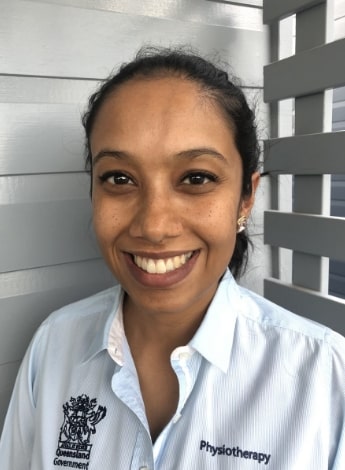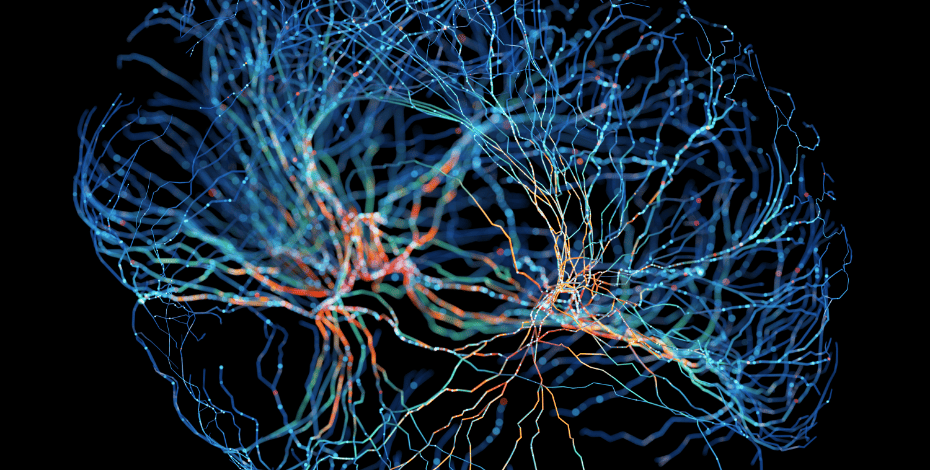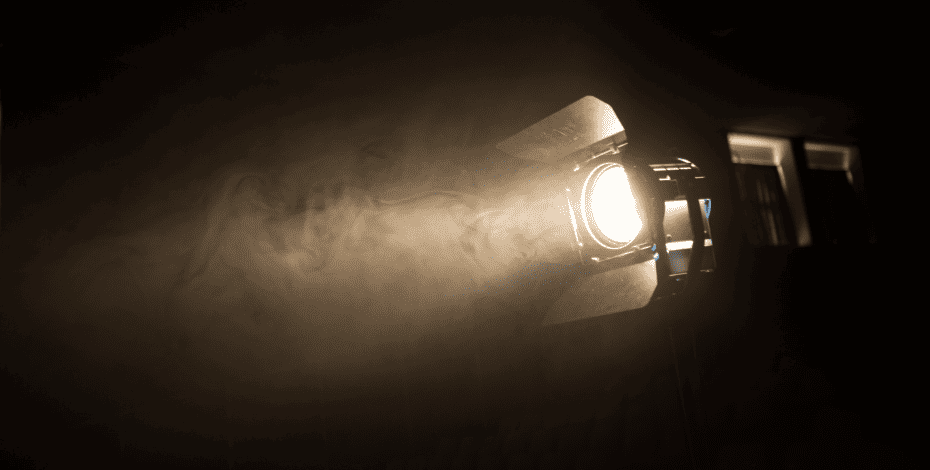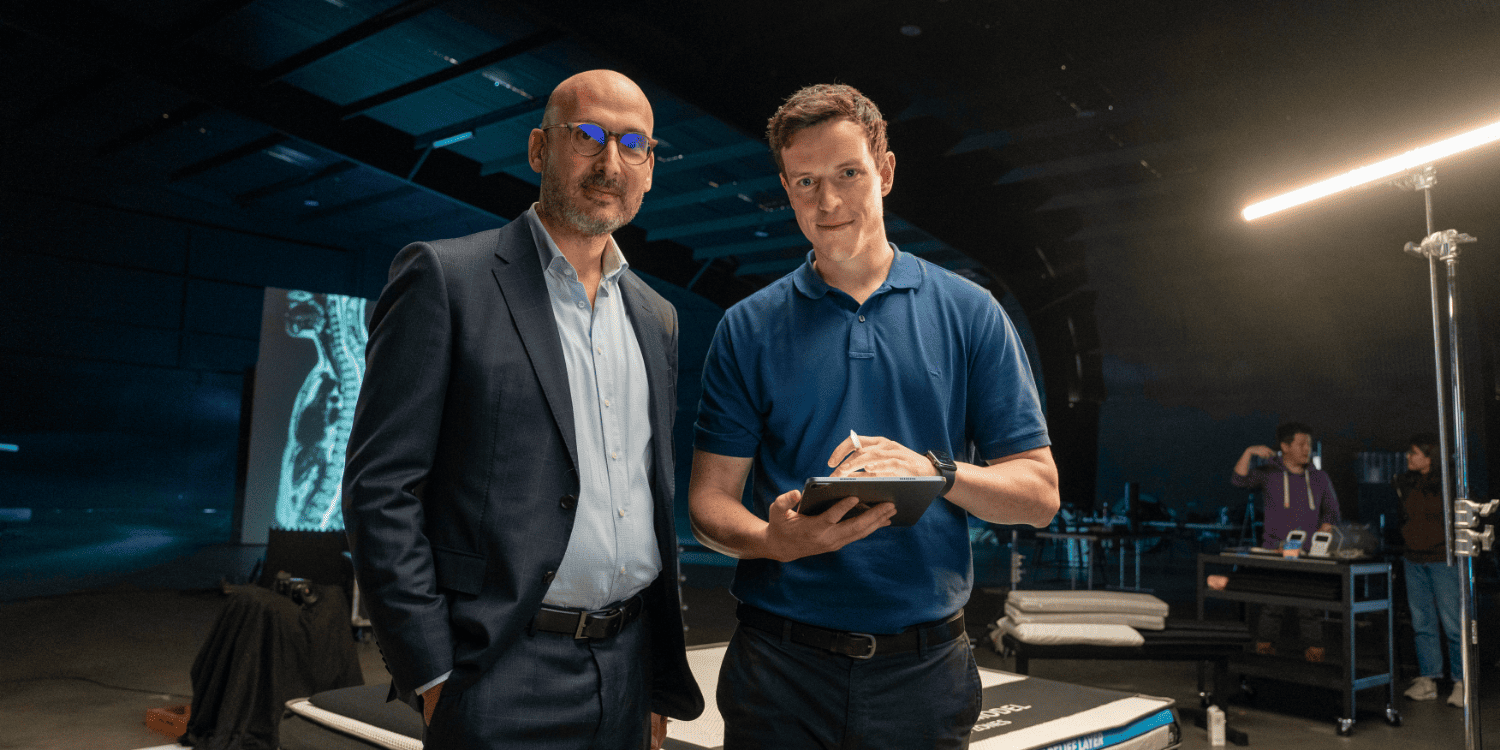
Understanding FND

Sara Issak explains contemporary thinking about functional neurological disorder and the current approach to treatment, while Dharsha Petrie provides case studies and some advice on building a strong team to tackle the condition.
What is FND?
Functional neurological disorder (FND) is characterised by symptoms that are unexplained by neuropathology (Stone & Carson 2015).
Clinical symptoms demonstrate inconsistency during assessment and incongruence with known pathophysiological conditions (Daum et al 2014).
The diagnosis of FND can usually be made on the basis of positive clinical features and is not a diagnosis of exclusion (Stone et al 2020).
Positive clinical features include, but are not limited to, Hoover’s sign (hip extension weakness that improves with contralateral flexion resistance), tremor entrainment (functional tremor that follows a pattern of movement in the unaffected hand) and features of functional seizures (eyes closed, hyperventilating and head shaking) (Stone et al 2020).
Functional neurological disorder can manifest in various clinical presentations, including motor or sensory symptoms, speech dysfunction, cognitive disturbance or non-epileptic seizures; however, other symptoms can also occur.
Many people with FND have varied combinations of these symptoms that often fluctuate in severity.
FND is linked to long-term disability, with a poor prognosis (Carson et al 2011, Gelauff et al 2019) and significant strain on healthcare systems (Carson & Lehn 2016).
Current best practice recommendations include an interdisciplinary approach to therapy, based on a biopsychosocial model, with input from physiotherapy, psychology, occupational therapy and speech therapy.
Key treatment principles include a graded motor relearning approach to normalise movement, sensory reintegration, cognitive behaviour therapy, goal setting and education.
Epidemiology
Functional neurological disorder is the second most common reason for someone to visit a neurologist (Carson & Lehn 2016, Stone et al 2010).
The incidence of FND in Australia represents 15–20 per cent of all neurology outpatient presentations (Ahmad & Ahmad 2016).
It is more likely to affect women than men, with a peak incidence between the ages of 35 and 50 years and low misdiagnosis rates (5 per cent) (Carson & Lehn 2016).
FND can coexist with other neurological diseases such as Parkinsonism or multiple sclerosis (Stone et al 2012, Tinazzi et al 2021) and is often termed ‘overlay’ in these instances.
Conversion disorder or psychogenic symptoms were terms historically used to describe this condition, but the recent text version of the Diagnostic and Statistical Manual of Mental Disorders (DSM–5-TR) has now replaced ‘conversion disorder’ with ‘functional neurological symptom disorder’ (Moran 2021).
This term is now widely accepted by both experts and service users.
Common FND presentations
Functional symptoms can present as sensorimotor symptoms (sensation changes, visual changes, tremor, weakness, myoclonus, dystonia or gait disturbance), speech and swallowing dysfunction (dysarthria, dysphasia, dysphonia or globus), cognitive disturbance (brain fog or reduced memory, processing speed and concentration) or non-epileptic seizures (convulsions or dissociative episodes, without any abnormal brain activity identified on EEG testing).
These symptoms are often considered ‘core symptoms’ of FND but usually occur alongside other associated physical and psychological symptoms (TR Nicholson et al 2020).
Examples of commonly associated symptoms include pain, fatigue, dizziness, bowel and bladder dysfunction, anxiety and depression.
Both core symptoms and commonly associated symptoms should be considered and addressed during assessment and treatment.
Aetiology
Functional neurological disorder is caused by a problem with the functioning of the nervous system.
This is usually explained to patients as a problem with the brain sending messages to the body (in the case of movement disorders) or receiving messages (in the case of sensory disturbances) or the brain entering into a trancelike state (in the case of functional seizures) (Functional Neurological Disorder (FND)—A Patient’s Guide to FND n.d.).
While a ‘software’ versus ‘hardware’ analogy is often used to explain the mechanism of FND to clients, some neuroimaging evidence is emerging relating to structural changes.
This study identified that individuals with FND may exhibit sensorimotor, prefrontal, striatal-thalamic and limbic structural alterations on neuroimaging; however, it is unclear if these changes are linked to predisposing vulnerabilities or the disorder itself (Bègue et al 2019).
The aetiology of FND is currently best understood using a biopsychosocial framework, with an interplay of individual predisposing, precipitating and perpetuating factors (Carson & Stone 2012).
Predisposing factors may include previous illness or adverse life events (Carson & Stone 2012).
Events such as psychological experiences, injury or trauma may precipitate symptoms (Edwards et al 2012, Ejareh dar & Kanaan 2016, Pareés et al 2014, Stone et al 2012).
Lastly, perpetuating factors such as illness beliefs, deconditioning or avoidance behaviours may often be associated with a maintenance of symptoms (Carson & Stone 2012).
Treatments should prioritise and address the most relevant aetiological factors for individuals living with FND.
Treatment
In the past two decades an increased number of interventional trials and systematic reviews along with expert consensus have supported interdisciplinary and specialist treatment for FND (Gilmour et al 2020, Greiner et al 2016, Gutkin et al 2021, Lehn et al 2016, Nielsen et al 2017, Petrochilos et al 2020, Schmidt et al 2021).
Clinicians working with people with FND should consider the following therapy principles to guide their interventions: interdisciplinary treatment that addresses illness beliefs and self-directed attention through goal-directed rehabilitation focusing on function and automatic movement, education and cognitive behaviour therapy (Baker et al 2021, Nielsen et al 2015).
A number of cohort trials have demonstrated support for interdisciplinary interventions in both inpatient and outpatient settings, with positive physical and psychological outcomes reported in the short and long term (Czarnecki et al 2012, Demartini et al 2014, Jordbru et al 2014, Mccormack et al n.d., Petrochilos et al 2020).


Sara Issak and Dharsha Petrie present an in-depth profile of the current treatment and management of functional neurological disorder.
One randomised feasibility study indicated that specialist physiotherapy is superior to usual-care physiotherapy, with 72 per cent of the treatment group reporting improvements, compared to 18 per cent in the control group, at six months follow-up (Nielsen et al 2017).
An adequately powered randomised trial is currently being conducted to evaluate this further (Nielsen et al 2019).
The demonstration of the potential for improvement during periods of symptom reduction or normal movement is a key element of rehabilitation of motor symptoms in FND.
This should be completed in a supportive context built on trust between the therapist and the client.
Movement retraining for motor symptoms may include functional exercises, graded and progressed in subsequent treatment sessions and with an emphasis on reduced self-directed attention; the use of activity-based tasks (which promote more automatic movement); and feedback from mirrors and/or video (Nielsen et al 2015).
Physiotherapy should be supported by occupational therapy and psychological interventions, addressing all relevant biopsychosocial factors and working towards client-centred goals.
Current consensus recommendations have been reported for occupational therapy (C Nicholson et al 2020).
A recent systematic review indicated that both cognitive behaviour therapy and psychodynamic therapy were effective psychological treatments for FND (Gutkin et al 2021).
There is a growing evidence base for FND treatments, but further large quality studies are still needed to direct treatment optimisation for improved patient outcomes.
Unfortunately, access to timely and specialised care remains a barrier for many service users in Australia, as outlined by a 2019 survey of consumers and carers (Gill 2019).
Consumers reported barriers including significant waiting times to obtain a diagnosis, reduced awareness and understanding of the condition by health professionals and limited expert services available in metropolitan and rural areas.
A limited number of dedicated FND services in Australia exist with the aim of improved access to treatment, but more specialist services are needed across metropolitan and regional areas to meet demand.
Functional neurological disorder is a multifaceted condition that can present with various symptoms.
There is rising good-quality evidence to support interdisciplinary treatment that focuses on physical and psychological interventions based on individualised therapy.
Further research is needed to guide treatment priorities for improved patient outcomes, in addition to increased public and professional awareness of the condition, clinician training and the establishment of specialised services to improve the quality of life of people living with FND.
How to build an effective team for treating FND
To help your team understand FND:
- include FND in your department orientation and multidisciplinary education programs
- create an agreed-upon multidisciplinary communication platform (such as a case conference and written correspondence to all members), which will minimise the risk of challenging behaviours developing, not only from the patient, but from the treating team
- identify team champions to help troubleshoot challenging presentations. Encourage peer supervision and co-treatments, particularly with less experienced therapists.
If you don’t have a network, create one.
Get to know your local multidisciplinary team by requesting frequent updates, but also by asking for the opportunity to job shadow them as professional development.
A common problem in the community is that there are limited speciality services as we move further from tertiary hospitals and metropolitan areas.
Call your local professionals (such as psychology and speech therapy) and ask if they would be interested in managing these patients together and developing a long-term referral relationship.
Telehealth accessibility has recently expanded across Australia.
This can be of assistance when collaborating with a mentor or when linking the patient with a specialty service intermittently, while you treat them between sessions according to the mutually agreed management plan.
CASE STUDY 1: Inpatient within a general medicine ward
History of presenting condition
Female, law student, 21 years old.
Hobbies include watching Netflix and socialising with friends.
Lives in a highset home with mum.
Works part-time in hospitality.
Formulation
Predisposing factors: Adverse childhood event.
Precipitating factors: Back pain and recent university examinations.
Presentation: Right lower limb weakness resulting in using a four-wheeled walker, stuttering speech, dissociative episodes, persistent mid–low back pain, fatigue and head and trunk myoclonus.
Perpetuating factors: Deconditioning, abnormal illness beliefs, self-reported anxiety, anxiety driving perfectionism and poor awareness of pacing and disturbed sleep patterns.
Ideal multidisciplinary management
Neurologist: A comprehensive examination and provision of definitive diagnosis of functional neurological disorder.
Psychologist: Cognitive behaviour therapy focused on anxiety management and overcoming barriers for pacing.
Education regarding FND and developing a symptom management plan.
Physiotherapy: Elicitation of normal movement through sit-to-stand, standing and walking practice and dynamic balance with an external point of focus.
Provision of an independent graded exercise program based on weight bearing, pacing and sensory integration.
Education regarding neuroplasticity, a graduated exercise program and pacing and long-term management of symptoms.
Development of a symptom management plan.
Intervention delivered over five days with the patient returning to baseline level of function.
Follow-up arranged with outpatient private practice, physiotherapy and psychology within two weeks and neurology in a month.
Troubleshooting suboptimal multidisciplinary management
Neurology: Limited access to neurologists.
Despite clear positive signs showing FND diagnosis, medical team unwilling to provide diagnosis.
Psychology: Patient declined referral to psychology as does not understand the point.
Impact on physiotherapy: Patient participating in rehabilitation, but constantly reports anxiety over uncertainty of the diagnosis and feeling that the team believes they are scarred from previous traumatic events and are putting their symptoms on.
The patient continues to either underdo or overdo the exercise program prescribed as they don’t understand what benefit physiotherapy has.
Physiotherapy and patient advocacy: Communicate to the treating team the impact on physiotherapy management when the diagnosis is unknown to patients.
This may include ongoing abnormal health beliefs (eg, patients worried that they have a neurodegenerative disease or wanting further investigations) or anxiety due to not understanding the effect of perpetuating factors on symptoms (such as the role of psychosocial factors on functional gait disturbance).
These factors limit the effect of physiotherapy and the level of acceptance and engagement in therapies by the patient.
In the long term, this affects hospital length of stay, increases stigma associated with the patient as the ‘difficult one’, perpetuates chronicity of symptoms by causing iatrogenic harm and increases the patient’s mistrust in the healthcare system.
CASE STUDY 2: Private practice
History of presenting condition
Male, landscaper and surf lifesaver, 55 years old.
Hobbies include long-distance running and volunteering at a local community group.
Lives with wife and four children in a lowset home.
Formulation
Predisposing factors: Nil identified.
Precipitating factors: A traumatic experience of nearly drowning in the surf 18 months ago.
Presentation: Limited movement in both arms constantly, persistent neck pain, atypical chest pain with associated shortness of breath, lethargy and intermittent difficulties with passing urine.
Perpetuating factors: Feels disbelieved by the medical system, unsure if he has a spinal cord injury, has nightmares causing disturbed sleep patterns and experiences stress related to running his own business.
Ideal multidisciplinary management
Emergency department: Once all red flags are ruled out, referral to neurology for a comprehensive examination to provide a definitive diagnosis of functional neurological disorder.
Discharge summary clear to GP for ongoing community multidisciplinary management.
Psychology and psychiatry: Cognitive behaviour therapy focused on managing any post-traumatic stress that remains, alongside education regarding FND and developing a symptom management plan.
Medications initially prescribed and weaned to assist with post-traumatic stress.
Physiotherapy: Elicitation of normal movement through upper limb weight bearing, encouraging bilateral upper limb tasks and manual therapy of the shoulder and neck.
Provision of an independent graded exercise program based on postural stability, pacing and sensory integration.
Education regarding neuroplasticity, a graduated exercise program and pacing and long-term management of symptoms.
Development of a symptom management plan.
Six physiotherapy outpatient sessions delivered over 12 weeks, with the patient returning to baseline level of function.
Occasionally experiencing mild flare-up of symptoms but understands how to self-manage and has not re-presented to the emergency department or GP for this reason.
Discharged from community multidisciplinary services.
Troubleshooting suboptimal multidisciplinary management
Emergency department: Discharged patient home once red flags cleared, providing advice that symptoms should resolve soon.
GP: Referrals made to cardiologist, respiratory physician, urologist and neurologist for further investigations, resulting in numerous time-consuming and costly investigations.
In the meantime, the patient has presented to physiotherapy citing neck pain and arm weakness.
Impact on physiotherapy
Case management and patient advocacy: Written letter/phone call to GP and neurologist communicating:
Observed positive signs in physiotherapy—the inconsistencies and incongruities between impairment testing and function.
This suggests that the patient either solely has a functional neurological disorder or has a functional component contributing to his symptoms.
It would be of benefit to the patient if this were explained to the patient, if appropriate.
If it is determined that the patient does have a functional neurological disorder, resources for patients can be found at neurosymptoms.org and at fndaustralia.com.au, which also includes an Australia-wide directory of community health professionals who manage FND.
The patient reports and accepts that symptoms are aggravated by poor sleep, by anxiety due to uncertainty over the diagnosis and by the financial impact of not being able to run his business effectively.
The patient agrees that he would benefit from a referral to a clinical psychologist.
The patient may be eligible to access a chronic disease GP management plan (up to five sessions per calendar year) for subsidised allied health and the mental health treatment plan (up to 20 subsidised sessions per calendar year) for mental health professionals (including psychology, social work, psychiatry and counsellors).
Without this multidisciplinary collaboration, the effect of physiotherapy is limited.
In the long term, this may cause ongoing healthcare costs with ongoing presentations to the emergency department and potential inpatient admissions.
Furthermore, the patient is unlikely to return to work and will be forced to seek out total and permanent disability insurance or access the National Disability Insurance Scheme under an inaccurate diagnosis.
This will lead to reduced quality of life and perpetuate chronicity of symptoms.
>> Sara Issak APAM is a Grade 3 Physiotherapist working in outpatient neurological rehabilitation at Epworth Camberwell Hospital, Melbourne and the clinic coordinator of the Epworth FND Clinic. Functional neurological disorders became a special interest area for her following her time working in London at the National Hospital for Neurology and Neurosurgery in its FND service. Since that time, she has given presentations at national and international conferences about FND and is currently completing a PhD at the University of Melbourne researching the characteristics of functional gait disorders to better inform the management of this subtype of FND.
>> Dharsha Petrie APAM MACP is an APA Neurological Physiotherapist. She has completed her Master of Rehabilitation (Neurological) and is a Senior Physiotherapist at the Princess Alexandra Hospital in Brisbane and Chair of the Queensland branch of the APA National Neurology group. Dharsha is a co-collaborator on the FND Australia website, is actively involved in training health professionals in the area of FND and has publications in FND, presenting this research at national and international conferences. She was the Physiotherapy Team Leader at Australia’s first dedicated public clinic for FND at the Mater Hospital in Brisbane, 2015–2019.
- References
-
Ahmad, O., & Ahmad, K. E. (2016). Functional neurological disorders in outpatient practice: An Australian cohort. Journal of Clinical Neuroscience, 28, 93–96. https://doi.org/10.1016/j.jocn.2015.11.020
Baker, J., Barnett, C., Cavalli, L., Dietrich, M., Dixon, L., Duffy, J. R., Elias, A., Fraser, D. E., Freeburn, J. L., Gregory, C., McKenzie, K., Miller, N., Patterson, J., Roth, C., Roy, N., Short, J., Utianski, R., van Mersbergen, M., Vertigan, A., … McWhirter, L. (2021). Management of functional communication, swallowing, cough and related disorders: consensus recommendations for speech and language therapy. Journal of Neurology, Neurosurgery & Psychiatry, 0, jnnp-2021-326767. https://doi.org/10.1136/jnnp-2021-326767
Bègue, I., Adams, C., Stone, J., & Perez, D. L. (2019). Structural alterations in functional neurological disorder and related conditions: a software and hardware problem? NeuroImage: Clinical, 22. https://doi.org/10.1016/J.NICL.2019.101798
Carson, A. J., & Stone, J. (2012). Functional and dissociative (psychogenic) neurological symptoms. In R. Daroff, G. Fenichel, J. Jankovic, & J. Mazziotta (Eds.), Bradley’s Neurology in Clinical practice (pp. 2147–62). Elsevier.
Carson, A., & Lehn, A. (2016). Epidemiology. In Handbook of Clinical Neurology (Vol. 139, pp. 47–60). Elsevier B.V. https://doi.org/10.1016/B978-0-12-801772-2.00005-9
Carson, Alan, Stone, J., Hibberd, C., Murray, G., Duncan, R., Coleman, R., Warlow, C., Roberts, R., Pelosi, A., Cavanagh, J., Matthews, K., Goldbeck, R., Hansen, C., & Sharpe, M. (2011). Disability, distress and unemployment in neurology outpatients with symptoms ‘unexplained by organic disease.’ Journal of Neurology, Neurosurgery & Psychiatry, 82(7), 810–813. https://doi.org/10.1136/JNNP.2010.220640
Czarnecki, K., Thompson, J. M., Seime, R., Geda, Y. E., Duffy, J. R., & Ahlskog, J. E. (2012). Functional movement disorders: Successful treatment with a physical therapy rehabilitation protocol. Parkinsonism and Related Disorders, 18(3), 247–251. https://doi.org/10.1016/j.parkreldis.2011.10.011
Daum, C., Hubschmid, M., & Aybek, S. (2014). The value of “positive” clinical signs for weakness, sensory and gait disorders in conversion disorder: A systematic and narrative review. In Journal of Neurology, Neurosurgery and Psychiatry (Vol. 85, Issue 2, pp. 180–190). BMJ Publishing Group. https://doi.org/10.1136/jnnp-2012-304607
Demartini, B., Batla, A., Petrochilos, P., Fisher, L., Edwards, M. J., & Joyce, E. (2014). Multidisciplinary treatment for functional neurological symptoms: a prospective study. Journal of Neurology, 261(12), 2370–2377. https://doi.org/10.1007/s00415-014-7495-4
Edwards, M. J., Adams, R. A., Brown, H., Pareés, I., & Friston, K. J. (2012). A Bayesian account of “hysteria.” Brain, 135(11), 3495–3512. https://doi.org/10.1093/brain/aws129
Ejareh dar, M., & Kanaan, R. A. A. (2016). Uncovering the etiology of conversion disorder: Insights from functional neuroimaging. In Neuropsychiatric Disease and Treatment (Vol. 12, pp. 143–153). Dove Medical Press Ltd. https://doi.org/10.2147/NDT.S65880
Functional Neurological Disorder (FND) – A Patient’s Guide to FND. (n.d.). Retrieved March 25, 2022, from https://www.neurosymptoms.org/en_GB/
Gelauff, J. M., Carson, A., Ludwig, L., Tijssen, M. A. J., & Stone, J. (2019). The prognosis of functional limb weakness: A 14-year case-control study. Brain, 142(7), 2137–2148. https://doi.org/10.1093/brain/awz138
Gill, K. (2019). Consumer and Carer Experiences of FND / CD in Australia.
Gilmour, G. S., Nielsen, G., Teodoro, T., Yogarajah, M., Coebergh, J. A., Dilley, M. D., Martino, D., & Edwards, M. J. (2020). Management of functional neurological disorder. Journal of Neurology, 267(7), 2164–2172. https://doi.org/10.1007/s00415-020-09772-w
Greiner, C., Schnider, A., & Leemann, B. (2016). Functional neurological disorders: A treatment-focused review. In Swiss Archives of Neurology, Psychiatry and Psychotherapy (Vol. 167, Issue 8, pp. 234–240). EMH Media. https://doi.org/10.4414/sanp.2016.00441
Gutkin, M., McLean, L., Brown, R., & Kanaan, R. A. (2021). Systematic review of psychotherapy for adults with functional neurological disorder. Journal of Neurology, Neurosurgery & Psychiatry, 92(1), 36–44. https://doi.org/10.1136/JNNP-2019-321926
Jordbru, A. A., Smedstad, L. M., Klungsøyr, O., & Martinsen, E. W. (2014). Psychogen ic gait diso rde r: A random ized cont rolled trial of physical rehabilitation with one -year fo llow -up. Journal of Rehabilitation Medicine, 46(2), 181–187. https://doi.org/10.2340/16501977-1246
Lehn, A., Gelauff, J., Hoeritzauer, I., Ludwig, L., McWhirter, L., Williams, S., Gardiner, P., Carson, A., & Stone, J. (2016). Functional neurological disorders: mechanisms and treatment. Journal of Neurology, 263(3), 611–620. https://doi.org/10.1007/s00415-015-7893-2
Mccormack, R., Moriarty, J., Mellers, J. D., Shotbolt, P., Pastena, R., Landes, N., Goldstein, L., Fleminger, S., & David, A. S. (n.d.). Specialist inpatient treatment for severe motor conversion disorder: a retrospective comparative study. https://doi.org/10.1136/jnnp-2013-306061
Moran, M. (2021). Updated DSM-5 Text Revisions to Be Released in March. Https://Doi.Org/10.1176/Appi.Pn.2022.1.20, 57(01). https://doi.org/10.1176/APPI.PN.2022.1.20
Nicholson, C., Edwards, M. J., Carson, A. J., Gardiner, P., Golder, D., Hayward, K., Humblestone, S., Jinadu, H., Lumsden, C., MacLean, J., Main, L., MacGregor, L., Nielsen, G., Oakley, L., Price, J., Ranford, J., Ranu, J., Sum, E., & Stone, J. (2020). Occupational therapy consensus recommendations for functional neurological disorder. Journal of Neurology, Neurosurgery, and Psychiatry, 91(10), 1037–1045. https://doi.org/10.1136/JNNP-2019-322281
Nicholson, T. R., Carson, A., Edwards, M. J., Goldstein, L. H., Hallett, M., Mildon, B., Nielsen, G., Nicholson, C., Perez, D. L., Pick, S., & Stone, J. (2020). Outcome measures for functional neurological disorder: A review of the theoretical complexities. Journal of Neuropsychiatry and Clinical Neurosciences, 32(1), 33–42. https://doi.org/10.1176/appi.neuropsych.19060128
Nielsen, G., Buszewicz, M., Stevenson, F., Hunter, R., Holt, K., Dudziec, M., Ricciardi, L., Marsden, J., Joyce, E., & Edwards, M. (2017). Randomised feasibility study of physiotherapy for patients with functional motor symptoms. Journal of Neurology, Neurosurgery and Psychiatry, 88(6), 484–490. https://doi.org/10.1136/jnnp-2016-314408
Nielsen, Glenn, Stone, J., Buszewicz, M., Carson, A., Goldstein, L. H., Holt, K., Hunter, R., Marsden, J., Marston, L., Noble, H., Reuber, M., & Edwards, M. J. (2019). Physio4FMD: Protocol for a multicentre randomised controlled trial of specialist physiotherapy for functional motor disorder. BMC Neurology, 19(1). https://doi.org/10.1186/s12883-019-1461-9
Nielsen, Glenn, Stone, J., Matthews, A., Brown, M., Sparkes, C., Farmer, R., Masterton, L., Duncan, L., Winters, A., Daniell, L., Lumsden, C., Carson, A., David, A. S., & Edwards, M. (2015). Physiotherapy for functional motor disorders: A consensus recommendation. Journal of Neurology, Neurosurgery and Psychiatry, 86(10), 1113–1119. https://doi.org/10.1136/jnnp-2014-309255
Pareés, I., Brown, H., Nuruki, A., Adams, R. A., Davare, M., Bhatia, K. P., Friston, K., & Edwards, M. J. (2014). Loss of sensory attenuation in patients with functional (psychogenic) movement disorders. Brain, 137(11), 2916–2921. https://doi.org/10.1093/brain/awu237
Petrochilos, P., Elmalem, M. S., Patel, D., Louissaint, H., Hayward, K., Ranu, J., & Selai, C. (2020). Outcomes of a 5-week individualised MDT outpatient (day-patient) treatment programme for functional neurological symptom disorder (FNSD). Journal of Neurology. https://doi.org/10.1007/s00415-020-09874-5
Schmidt, T., Ebersbach, G., Oelsner, H., Sprock, A., König, I. R., Bäumer, T., Münchau, A., & Weissbach, A. (2021). Evaluation of Individualized Multi‐Disciplinary Inpatient Treatment for Functional Movement Disorders. Movement Disorders Clinical Practice. https://doi.org/10.1002/mdc3.13268
Stone, J., Carson, A., Duncan, R., Roberts, R., Coleman, R., Warlow, C., Murray, G., Pelosi, A., Cavanagh, J., Matthews, K., Goldbeck, R., & Sharpe, M. (2012). Which neurological diseases are most likely to be associated with “symptoms unexplained by organic disease.” Journal of Neurology, 259(1), 33–38. https://doi.org/10.1007/s00415-011-6111-0
Stone, J., Carson, A., Duncan, R., Roberts, R., Warlow, C., Hibberd, C., Coleman, R., Cull, R., Murray, G., Pelosi, A., Cavanagh, J., Matthews, K., Goldbeck, R., Smyth, R., Walker, J., & Sharpe, M. (2010). Who is referred to neurology clinics? - The diagnoses made in 3781 new patients. Clinical Neurology and Neurosurgery, 112(9), 747–751. https://doi.org/10.1016/j.clineuro.2010.05.011
Stone, Jon, Burton, C., & Carson, A. (2020). Recognising and explaining functional neurological disorder. BMJ, 371. https://doi.org/10.1136/BMJ.M3745
Stone, Jon, & Carson, A. (2015). Functional neurologic disorders. CONTINUUM Lifelong Learning in Neurology. https://doi.org/10.1212/01.CON.0000466669.02477.45
Stone, Jon, Warlow, C., & Sharpe, M. (2012). Functional weakness: Clues to mechanism from the nature of onset. Journal of Neurology, Neurosurgery and Psychiatry, 83(1), 67–69. https://doi.org/10.1136/jnnp-2011-300125
Tinazzi, M., Geroin, C., Erro, R., Marcuzzo, E., Cuoco, S., Ceravolo, R., Mazzucchi, S., Pilotto, A., Padovani, A., Romito, L. M., Eleopra, R., Zappia, M., Nicoletti, A., Dallocchio, C., Arbasino, C., Bono, F., Pascarella, A., Demartini, B., Gambini, O., … Morgante, F. (2021). Functional motor disorders associated with other neurological diseases: Beyond the boundaries of “organic” neurology. European Journal of Neurology, 28(5), 1752–1758. https://doi.org/10.1111/ENE.14674 -
© Copyright 2025 by Australian Physiotherapy Association. All rights reserved.





